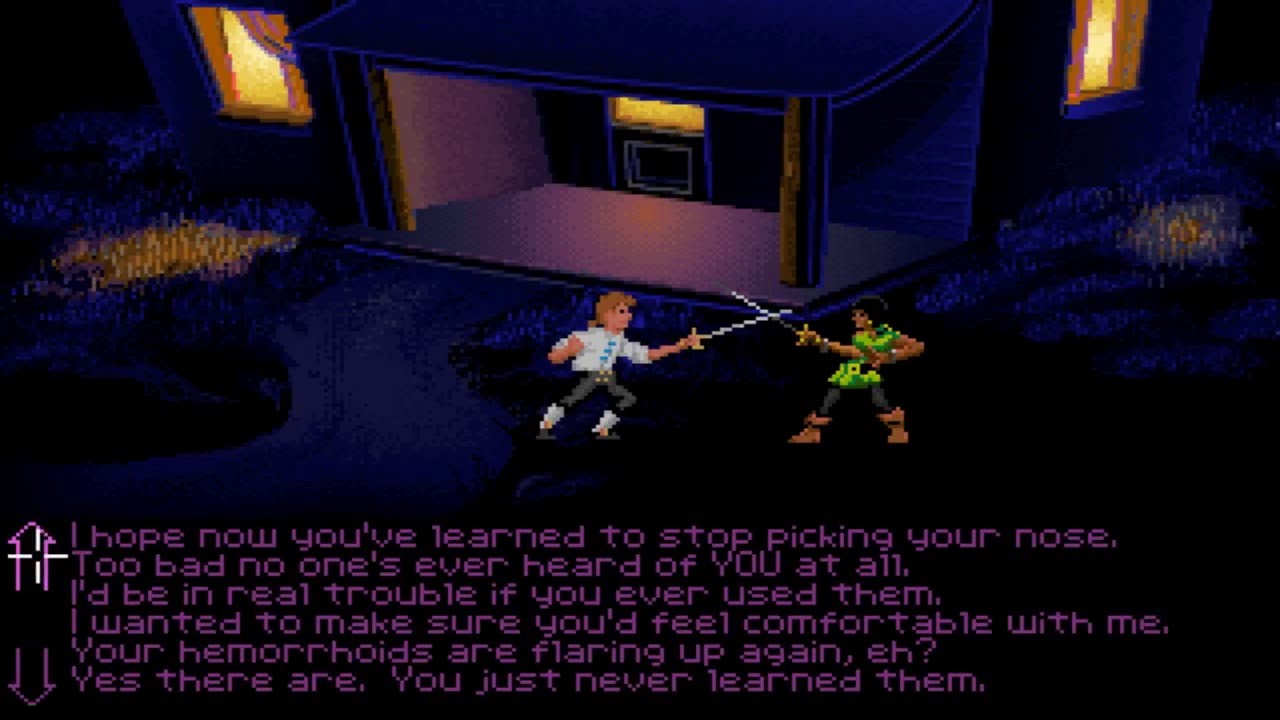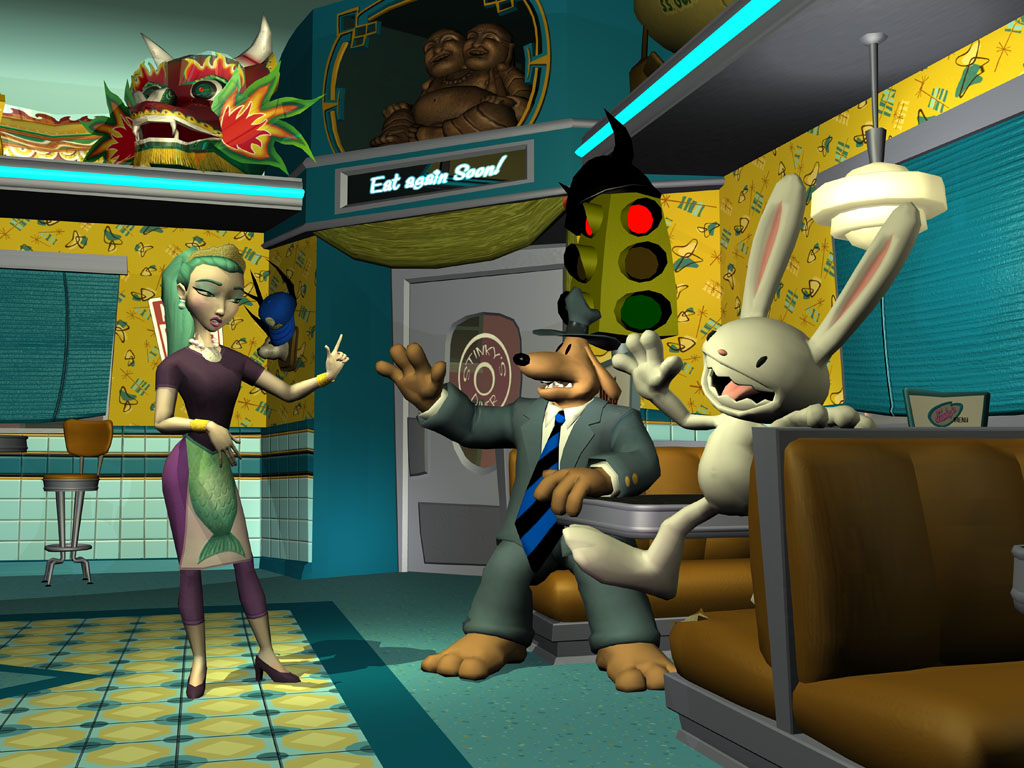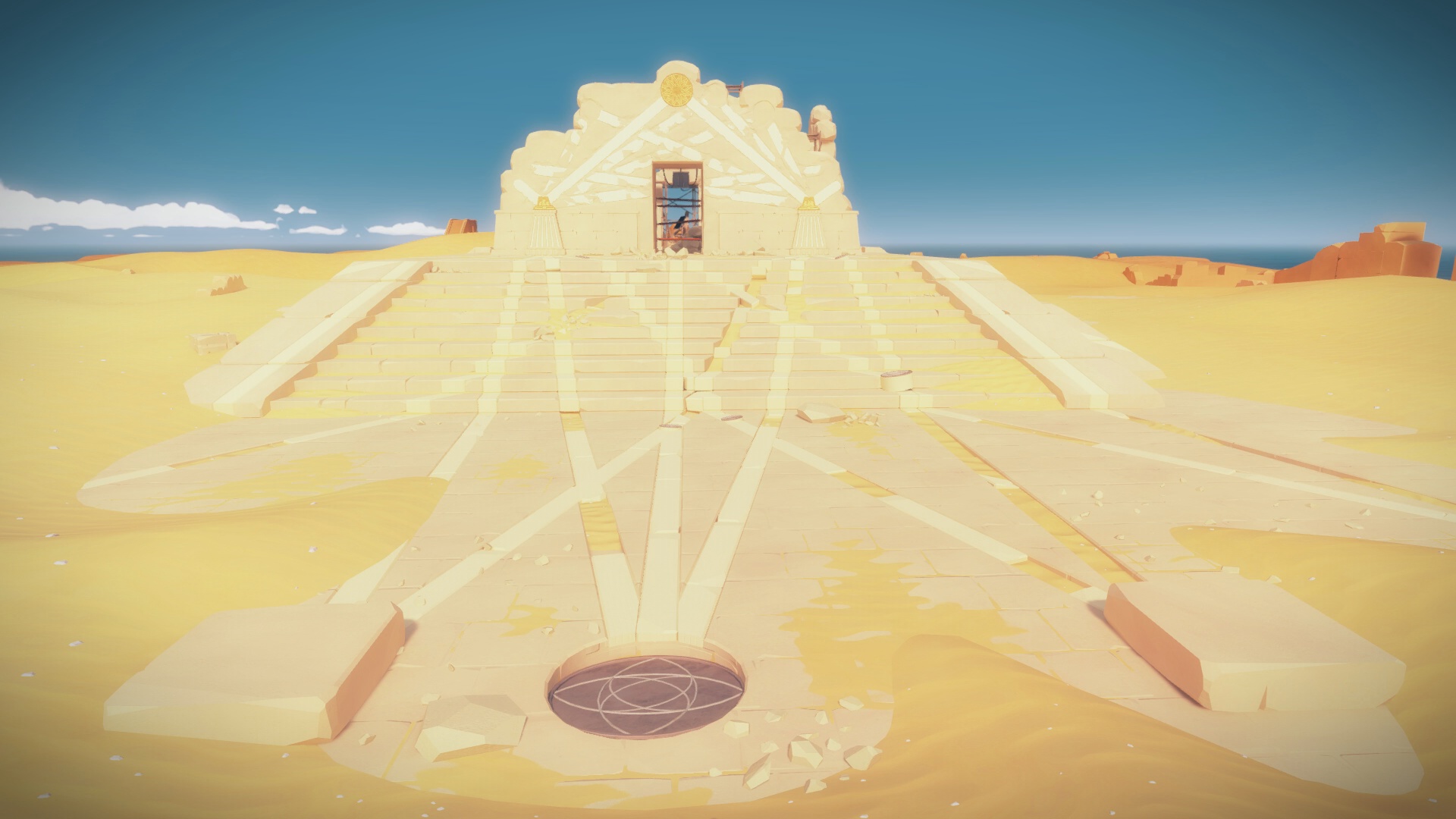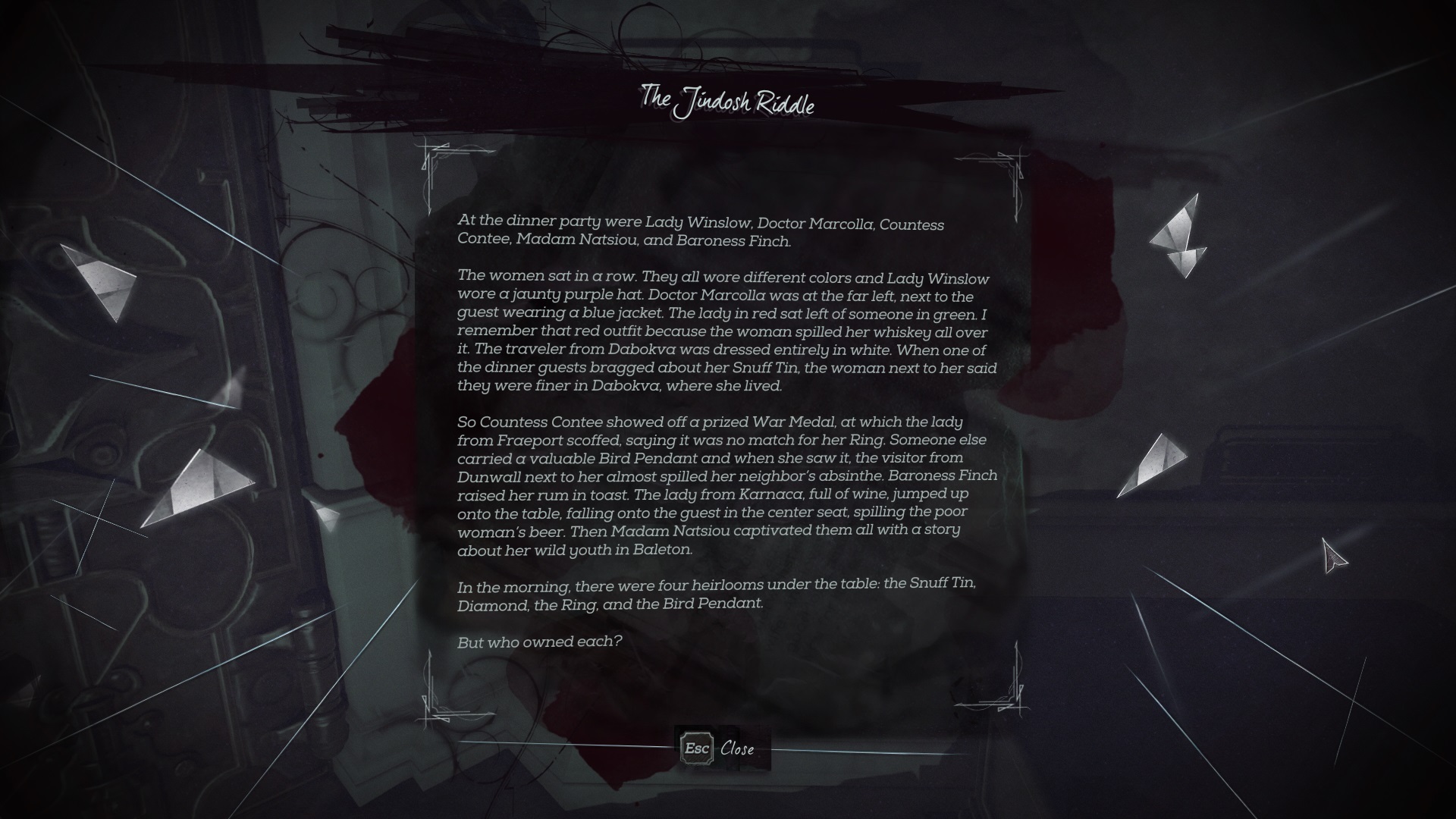Great puzzles in PC gaming
Now these are some damn good puzzles.

There are approximately eight billion lists on the internet detailing the worst puzzles in video games. Hell, we got into the act ourselves back in 2015. You probably know the classics: the maple syrup-doused fake mustache from Gabriel Knight, the mirrored alphabet Rumpelstiltskin bamboozle in the first King's Quest, Hitchhiker's Guide to the Galaxy's game-ending babelfish Rube Goldberg machine, the busted goat sequence in the (otherwise incredible) Broken Sword. Those are all memorably antagonizing, and they serve as a shorthand explainer for how the golden age of adventure gaming grew fat on its moon logic excess before plummeting to the ground.
But games have also seen plenty of great puzzles along with the failures. You know what I'm talking about; the visual riddles that tease you just long enough before revealing their truths, with no disappointed exhales after discovering a solution that's either too obvious or too convoluted. That moment of satisfaction you feel when you crack it, you genius. Here are 10 that stand out.

Insult sword fighting in Monkey Island
The classic suite of LucasArts PC adventures often fell on their face when they tried to include gameplay mechanics outside of the usual point-and-click rigamarole. (I'm looking at you Full Throttle, with your terrible demolition derby sequence.) So, it's a relief that Ron Gilbert's swashbuckling instant classic The Secret of Monkey Island didn't feature any braindead fencing on the high seas. Instead, you dispatched the slimy pirates in your path the only way an adventure game should; by riposting their C-minus insults with something far more witty and damaging. Collecting those retorts, which slowly replace Guybrush's initial anemic suite of quips, is one of the finest pleasures of Monkey Island, and watching them pay off in the duel with the fabled sword master set the tone for the rest of the game. ("You fight like a dairy farmer." "How appropriate, you fight like a cow!") If only all disputes could be handled with such perfect repartee.

Time-travelling in Sam & Max Beyond Time and Space
I'm sure most lifers probably prefer the dewy-eyed Sam & Max Saves The World, with its more grounded gumshoe story that expertly resuscitated the long-dormant lagomorph and canine detective tandem from their early '90s cryostasis. Personally though, I've always felt that season 2 was Telltale's artistic pinnacle. Sam & Max were now solving absurd mysteries that traversed vampire raves, the splintering chronosphere, and the afterlife itself. In episode five, Max catches a remote control tossed by his previous self, (with the power of a time-travelling elevator,) in episode four. It was funny, tactile, expertly foreshadowed, and effortlessly smart without being overbearing. I know Telltale is busy cashing checks from DC and Random House, but it'd be nice if someday they returned to Sam & Max's zany, bitterly acerbic North America. Honestly, we need them now more than ever.
The introduction of Leisure Suit Larry 7: Love For Sail!
Tonally Leisure Suit Larry 7: Love for Sail a fizzy-drunk, eagerly puerile misadventure set on an obnoxiously hedonistic cruise ship. You play craps on the bridge and retrieve beach towels for Drew Barrymore, but my favorite moment is in the very beginning, in which Mr. Laugher is bound by shackles over a burning penthouse bed in nothing but a leopard print thong. It's Tomb Raider hijinx, as filtered through the proverbial balding lech. If Leisure Suit Larry never makes his way back into the spotlight, his swansong ought to be that slow-motion dive off that hotel balcony.

Environmental puzzles in The Witness
I liked The Witness. It's undeniably a masterpiece in eurythmic game design, but I was left a little bit cold by the repetition of the core mechanic. I mean, you're standing on this beautiful, fascinating island, full of these mysterious machines and sculptures passed on from some sort of ascended species… and it only adds up to endless suite of line puzzles. Great line puzzles! Brilliantly mutated line puzzles! But line puzzles nonetheless. Obviously the exception to that monotony are the environmental secrets, which blow your mind when you first stumble into one.
Everyone has some version of the same story: you notice a natural sphere embedded in the misty scenery, you drop your cursor over it and boom. Those discoveries are when The Witness' design intuitiveness and artistic spirit are in perfect symbiosis, leaving us starry-eyed and seeing circles and lines long after we left the game behind.
Keep up to date with the most important stories and the best deals, as picked by the PC Gamer team.

The crypto-linguistics in Fez
It's difficult to remember now, but once upon a time, Fez was marketed as an ordinary indie platformer. The central gimmick was the ability to fold 2D into 3D, in order to present several tasteful, ordinary challenges. Of course, then you scaled to the top of the waterfall, and discovered a Rosetta Stone that immediately decoded all of those funny glyphs you saw over the course of the journey. To this day, I can't think of a game that hides its true intentions so effectively. If I had a videogame wormhole, I'd ask to be taken back to those precious few days in the spring of 2012, when our world was swallowed whole by Fez codebreaking.

The fire marbles in Riven
Riven is appreciated exclusively by a cabal of hardcore PC adventure gamers, because frankly, the game's challenges are difficult enough to be categorized as cruel and unusual punishment by anyone else. The sequel to Myst is a motherfucker; endless backtracking, baroque multi-tiered puzzles, extremely subtle clues buried into the soundtrack. If you've made this journey before, you probably have a special place in your psychosis for the fire marbles. In which Riven asks you to place several chromatic marbles on a 750-space Chinese Checkers board in spaces that correspond with a few metallic domes scattered across the island chain. You'll never see another game quite like Riven, which is a shame, because I like it when my adventure games reward a passing knowledge of trigonometry.
The cherry tree in Day of the Tentacle
By 1993 gamers had been on five Space Quests, six King's Quests, two trips to Monkey Island, and a full-length Indiana Jones adventure, so you could forgive the LucasArts braintrust for not knowing exactly where to go next. But thankfully, Day of the Tentacle answered that question with a gorgeous, Technicolor odyssey that spread its journey from the distant past to a hypothetical future. One of the best bits comes in the very beginning; Laverne is stuck in a kumquat tree, and Hoagie, who's somehow parading around post-colonial America, paints those kumquats red to look like cherries, in order to coerce George Washington into chopping it down. Honestly I wouldn't mind living in a world where Hoagie had a profound influence on our civics.

The Jindosh Riddle in Dishonored 2
The Jindosh Riddle in Dishonored 2 is a logic-based door lock with multiple, randomly-determined variables, and it's hard: A tale of five ladies at a dinner party, each wearing a different color and carrying a unique treasure, who eat, drink, get rowdy, and leave it to you to sort out the aftermath. A solution is available elsewhere in the level, but if you can figure it out on your own you can skip all that, and pick up an achievement in the bargain. I thought I'd blow through it in a couple of minutes, as one typically does when confronted by a videogame lock, but instead I was left utterly baffled, and thus forced to go trundling through one of the seedier parts of Karnaca in search of the note that would get me through. For the most part, that was fine: Missing out on a large portion of a really good level as a "reward" for cracking a puzzle isn't the most appealing prize I've ever been offered. But whether you crack it yourself or not, the Jindosh Riddle remains one of the most memorable pieces of Dishonored 2. How many action games are confident enough to drop a logic puzzle in your lap, and let you skip a chunk of painstaking level design if you pull out pencil and paper to solve it? — Andy Chalk
Assassin's Creed 2: The Truth
This wasn't a single puzzle, but rather a sequence of 20 of them, triggered by glyphs hidden across Assassin's Creed 2's open world. And they were completely batshit. The first Assassin's Creed's sci-fi framing was a total letdown, but the sequel did it right, channeling the mystery of Lost into a sequence of puzzles hinting at The Truth, some grand conspiracy. The solution to each puzzle was locked behind clues hidden in classical paintings, objects hidden in old photographs, secret passcodes… each piece of the puzzle was gloriously weird, and the effort that went into making each unique sold the entire sequence as a grand mystery. It really didn't matter that in the end The Truth was almost total nonsense (I think there were aliens, who created humans, and one of them is the Pope?). Unraveling that mystery and the weird-ass video of sci-fi Adam & Eve it slowly unlocked was captivating. —Wes Fenlon
Breaking free in Portal
For intricate, brilliant puzzle design, Portal 2 is a stronger game than its predecessor. The co-op puzzle chambers are especially great, putting an emphasis on teamwork and timing. But it's hard to get better than the integration of story and puzzle in the first Portal, when you realize the quirky VO is much more than set dressing for a puzzle game. There's a real narrative here, and the experience of breaking the rules—and breaking out of your test chamber to avoid a fiery death—was so exciting, it was even worth years of "the cake is a lie" jokes. The puzzle itself was as simple as a single well-placed portal, but that moment made the game. — Wes Fenlon

Luke Winkie is a freelance journalist and contributor to many publications, including PC Gamer, The New York Times, Gawker, Slate, and Mel Magazine. In between bouts of writing about Hearthstone, World of Warcraft and Twitch culture here on PC Gamer, Luke also publishes the newsletter On Posting. As a self-described "chronic poster," Luke has "spent hours deep-scrolling through surreptitious Likes tabs to uncover the root of intra-publication beef and broken down quote-tweet animosity like it’s Super Bowl tape." When he graduated from journalism school, he had no idea how bad it was going to get.

